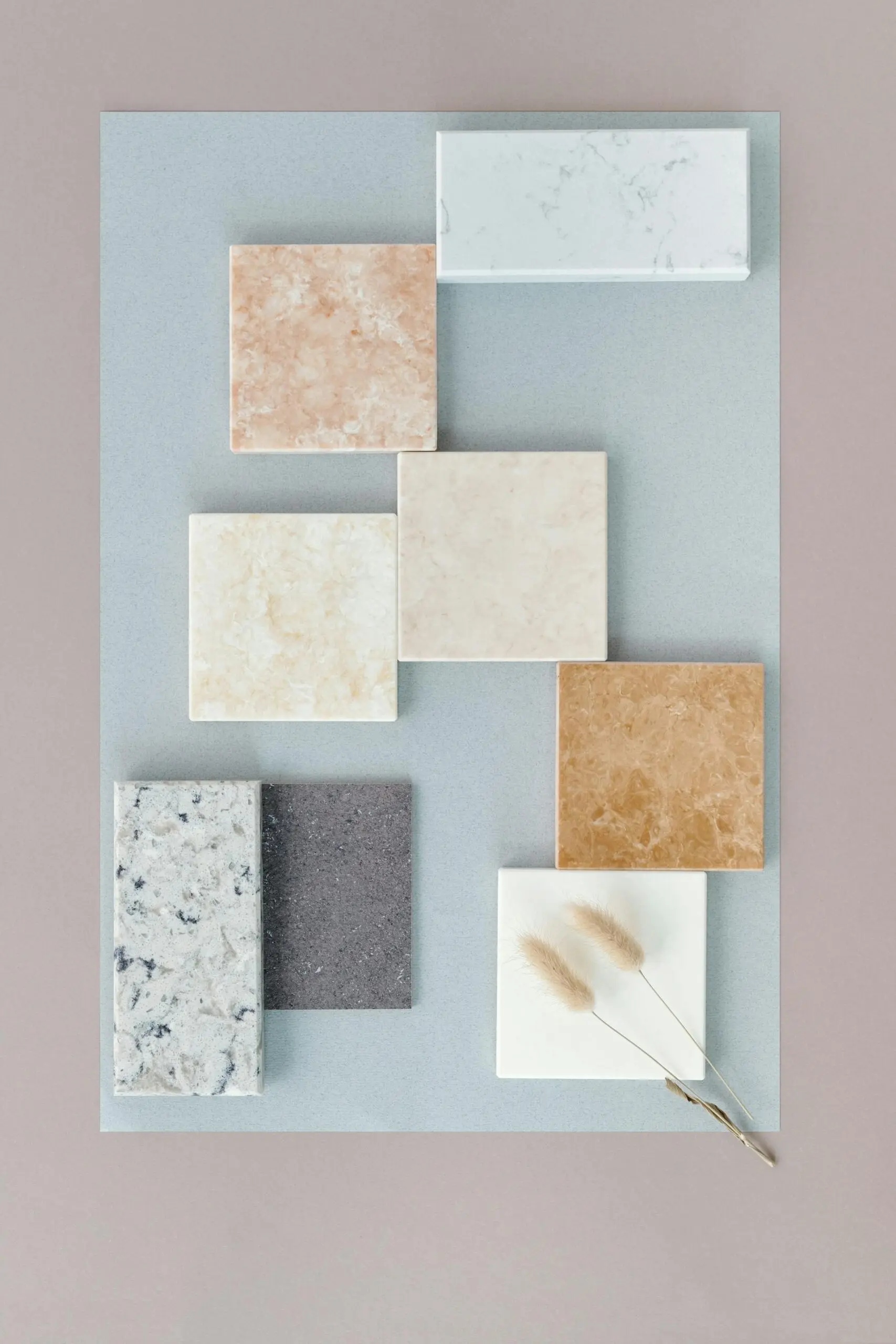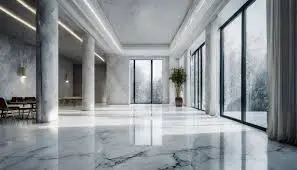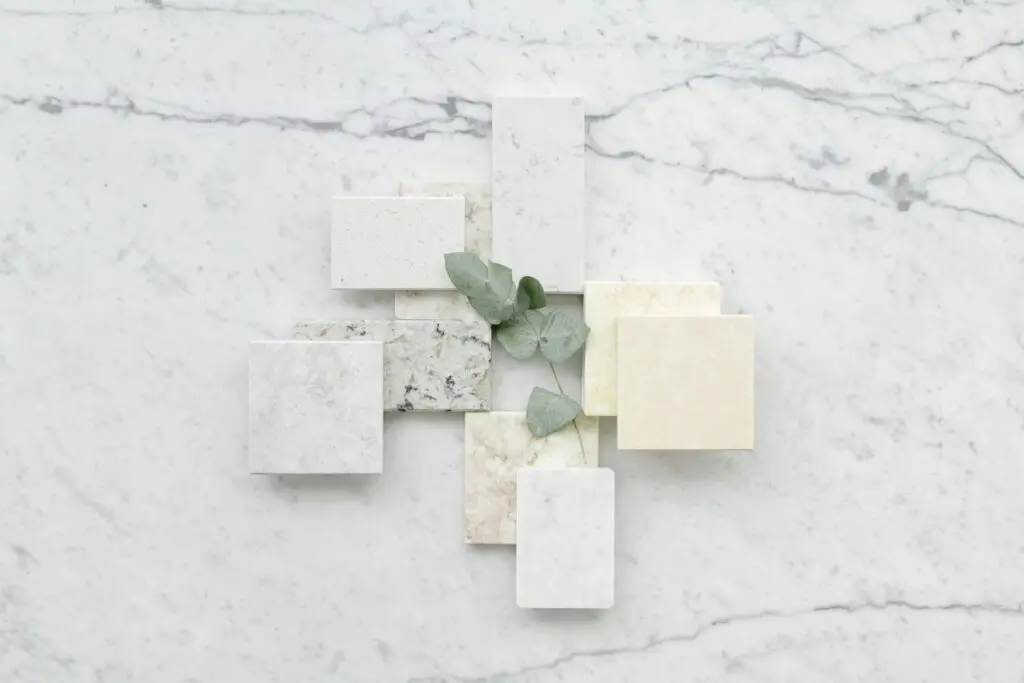Expert Advice for Successful Tile Installation Projects
When planning your natural stone project—whether installing marble or travertine tiles, mosaics, liners, or even decorative switch plates—ensuring you order enough material is a crucial step. A common question among customers is, “How much extra material should I order?”
In this comprehensive guide, we’ll explain why industry experts recommend ordering 10-15% extra natural stone material. This buffer helps achieve a flawless finish, accommodate natural variations, prevent installation delays, and provide material for future repairs. Additionally, we’ll share expert tips to streamline your project and avoid costly mistakes common during natural stone installations.
The Importance of Extra Material for Natural Stone Projects
Unlike manufactured tiles, natural stones such as marble and travertine showcase distinctive variations in veining, color, and texture. This natural uniqueness enhances their beauty but also means that pieces may not perfectly match across your project. To accommodate these variations and installation challenges, the industry standard advises ordering an extra 10-15% of material.
This Extra Material Ensures:
- Consistent Color and Texture: Natural stones are quarried in batches that can vary slightly. Extra material provides flexibility to select pieces with the best matching hues and veining for a uniform appearance.
- Cutting and Trimming: Custom fitting around edges, corners, and obstacles inevitably leads to wasted pieces. Additional stone accounts for these cutoffs.
- Breakage: Natural stone can chip or break during transport and installation. Having spare tiles ensures replacements are readily available.
- Future Repairs: Retaining extra tiles allows for seamless touch-ups or repairs down the line without struggling to match new material.
Why 10-15% Extra Is the Industry Standard
Our tile expert, with extensive experience in natural stone installations, highlights that a 10-15% overage is necessary due to several factors:
- Cut Waste: Intricate patterns (e.g., herringbone, basketweave) require more cuts, creating additional material waste.
- Pattern Matching: Aligning natural veining or colors in mosaics or liners demands extra pieces to maintain visual flow.
- Accidental Damage: Even professional handling can result in cracked or chipped tiles that need immediate replacement.
Ordering this extra material provides a buffer, ensuring the project runs without interruptions due to shortages.
How to Calculate Extra Material for Your Natural Stone Project
Calculate the amount of extra stone you should order by following these steps:
- Measure the Area: Measure the installation space (floors, walls, backsplashes, etc.) accurately by multiplying the length by width to get total square footage. Include any areas where tile will be installed. surfaces
- Add 10-15% Extra: For simple layouts, multiply the total square footage by 10%. For complex patterns or irregular spaces, use 15% extra.
- Consider Tile Size: Larger format tiles usually require less extra than smaller mosaics or liners—allocate towards 15% extra in those cases.
Example Calculation: For a 100 square foot area with 15% extra, calculate 100 x 0.15 = 15 additional square feet, resulting in a 115 square feet total order.
Why Cutting and Breakage Happen During Installation
Natural stone tiles, particularly marble and travertine, are fragile when worked on. Cutting to size or drilling for fixtures can cause chipping or cracking. Additionally, some stones like travertine contain natural voids or holes contributing to their rustic look, but these may need filling or replacement using your extra tiles to maintain aesthetic continuity.
Having spare material guards against surprises that could otherwise delay your project or compromise the final appearance.
Natural Stone Variation: Why Every Piece Is Unique
Each natural stone tile is uniquely formed, reflecting years of geological processes that create distinct veining, color variations, and textures. This uniqueness is a primary reason natural stone remains highly sought-after. However, these variations mean some tiles won’t perfectly match, requiring you to have extra inventory to swap out any pieces that disrupt the visual harmony.
Strategically selecting from your extra stock helps create a consistent, balanced look that highlights the natural beauty of the stone.
Expert Advice: Common Mistakes to Avoid
- Not Ordering Enough Extra: Underestimating the need for extra stone can cause costly delays. For complex or large projects, consider ordering up to 20% extra.
- Miscalculating Area: Inaccurate measurements often result in insufficient material. Always double-check and round up your measurements.
- Ignoring Natural Variation: Don’t overlook the impact of stone variation; be prepared to set aside mismatched pieces and replace them with extras.
Why Buying Extra Material Saves Time and Money
Ordering extra raw materials at the start of your project may slightly increase initial costs but ultimately saves significant money and hassle. Running out of tiles mid-installation can cause project delays, expensive expedited shipping, and risk mismatched colors when ordering from a new batch. Extra inventory keeps your project on schedule and maintains visual consistency.
Moreover, retaining spare tiles simplifies future tile repairs, ensuring your natural stone surface preserves its seamless appearance for years to come.
What to Do with Leftover Materials?
Leftover tiles can be a valuable asset after project completion. Here are creative and practical ways to utilize them:
- Keep for Repairs: Store extra tiles safely to address any future damage promptly.
- Create Accent Pieces: Use remnants for smaller decorative projects like backsplashes, wall inlays, or custom switch plates.
- Donate or Sell: If you have a significant surplus, consider donating to local builders or selling online.
Key Takeaways from the Tile Expert
To summarize essential insights:
- Always order 10-15% extra natural stone material to cover cutting waste, breakage, and natural variation.
- Measure your project area precisely and factor in design complexity when calculating extra material.
- Extra materials save time and money by preventing project interruptions and ensuring consistent future repairs.
Customer Q&A with Our Tile Expert
Customer (Emily Davis):
“Why do I need extra material for my natural stone tile project?”
Tile Expert (Mark Johnson):
Great question, Emily! Natural stone tiles vary in color, veining, and texture, and some may break during handling or require cutting to fit. Ordering 10-15% extra ensures you can cover these issues while maintaining a consistent look throughout your project.
Customer (Alex Smith):
“How much extra material should I order?”
Tile Expert (Mark Johnson):
Hi Alex! Typically, 10-15% extra is recommended. For intricate patterns like herringbone or mosaics, lean towards 15%. Simpler installations might only need 10% extra.
Customer (Sophia Thompson):
“What happens if I don’t order enough extra material?”
Tile Expert (Mark Johnson):
Hi Sophia. Running out mid-project causes delays, potential color mismatches, and increased costs from reordering. It’s best to have a buffer to avoid these setbacks.
Customer (James Lee):
“How do I calculate the amount of extra material I need?”
Tile Expert (Mark Johnson):
Hi James! Measure your area’s square footage, then multiply by 0.10 or 0.15 based on complexity. This gives the extra material amount to order on top of your base calculation.
Customer (Rachel Nguyen):
“What should I do with leftover tiles after installation?”
Tile Expert (Mark Johnson):
Good question, Rachel! Save them for future repairs, or use them creatively for accents and small projects. You can also donate or resell them if you have a surplus.
Customer (David Martinez):
“Will ordering extra material make my project more expensive?”
Tile Expert (Mark Johnson):
Hi David. While upfront costs are higher with extra material, it prevents costly delays and batch mismatches, ultimately saving you money and stress.
Customer (Mia Carter):
“Why does natural stone have so many variations, and how does this affect my project?”
Tile Expert (Mark Johnson):
Mia, natural stone’s unique characteristics stem from geological processes over thousands of years, resulting in individual color, veining, and texture differences. This requires ordering extra to select matching tiles for a cohesive appearance.
Customer (Brandon Walker):
“Is ordering extra material for natural stone different than for ceramic or porcelain tiles?”
Tile Expert (Mark Johnson):
Hi Brandon. Yes! Manufactured tiles like ceramic and porcelain have uniform color and texture, so less extra is needed. Natural stones like Natural stone show more variation, requiring more overage to ensure consistency.
Customer (Olivia White):
“How long should I keep my extra tiles after the project is completed?”
Tile Expert (Mark Johnson):
Olivia, it’s best to keep extra tiles indefinitely, storing them in a dry, safe place. Tiles might chip or crack over time, and having matching replacements on hand will make repairs easier and visually consistent.
For more information about “Cozy Up Your Space: Inspiring Fall Room Ideas to Embrace the Season”, please visit our “Decoration” category.
Natural stone is a timeless choice for interiors and exteriors, offering unmatched elegance and durability. However, its unique characteristics require careful planning, especially regarding material quantities. Beyond ordering extra for breakage and cutting, selecting quality stone from reliable suppliers and proper storage to prevent damage before installation are crucial steps. Additionally, working with experienced installers familiar with natural stone’s nuances can significantly enhance your project’s success. By understanding the complexities and preparing accordingly, you can enjoy a stunning, long-lasting stone surface that enhances your space’s aesthetic and value for years to come.



